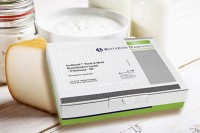Attend the Food Safety Supply Chain Conference, June 5–6, 2017 in Rockville, MD | LEARN MORERetailers demand peak supply chain performance, and suppliers who fail to provide on-time, accurate deliveries face costly penalties. Further to peak performance, retailers also require a high level of supply chain visibility and transparency to ensure the quality and safety of the food they’re selling. The many moving parts of the supply network require a fine-tuned logistical approach, and a big piece of this is having a retail strategy that optimizes and consolidates your food shipments. This helps suppliers in a myriad of ways, which we’ll delve into here.
Before we do that, let’s set the stage a bit: Compliance programs are the norm within today’s retail supply chain. These programs outline appointment times and delivery standards to ensure quality of goods—among other things—along with the penalties for not meeting the terms. Retailers’ compliance programs vary, but the theme is consistent: Non-compliance results in major costs that add up over time and cause the risk of loss of business.
To gain a competitive advantage, shippers are focusing more on retail consolidation programs that optimize and consolidate shipments while focusing on customer service to help shippers get ahead. These programs can provide complete visibility, enhance control, capture critical business intelligence, create efficiencies, decrease costs, reduce mileage, improve speed to market, and decrease over, short and damage (OS&D) claims—among other benefits.
Let’s take a closer look at some of these:
1. Enhanced Inventory Management
Inventory control is critical in the retail sector. Retailers try to keep their inventories low and have just-in-time deliveries from vendors. This helps to ensure goods are delivered and sold at the highest quality, which, for certain foods like fresh produce or refrigerated items, can often have a narrow window of freshness. At the same time, retailers want to make sure the product they need is going to be available. This is especially the case when seasonal demand for certain food items ebbs-and-flows, such as during the holidays.
As part of a retail optimization program, supply chain service providers can help retailers and suppliers manage inventory by analyzing data and making proactive, rather than reactive, inventory and transportation decisions.
2. Reduced Transit Times
The growth of the omni-channel sector—including in the grocery business—means customers want and expect things at the click of a button, and lead time has a major impact on the cost, quality control and continuity of ordering patterns. In fact, a recent report from Internet Retailer, 2016 Online Food Report, details how the online grocery sector is suddenly a booming market, and is expected to grow by 157% to $42.1 billion this year alone, according to Morgan Stanley.
Proactive communication and continual analysis of transit time data can help suppliers plan and execute an effective transportation strategy as the omni-channel food retail market continues to tick up. Namely, by combining potentially inefficient partial loads into fully utilized truckloads, suppliers can achieve shorter, more predictable transit times. With proper pre-planning, loads can be consolidated, which then allows zone skipping and more direct transportation routes. Zone skipping also reduces the number of times freight is handled, which reduces the risk of damage and errors.
3. Network Optimization
A comprehensive network analysis and optimization effort can drive significant reductions in landed costs while maintaining, or even improving, transit times by considering production, warehousing and inventory needs in addition to transportation. Warehouse location is a critical decision; however, growth projections and potential new markets must be included in forward planning to ensure that today’s appropriate solution does not become tomorrow’s barrier to scalability.
The decision to work with a single national warehouse provider or multiple regional warehouse providers is driven not solely by cost, but also by the consideration of utilizing a single or multiple warehouse management systems. This analysis complements a mode optimization effort, allowing shippers to control costs, ensure product safety and quality and enhance service through the optimum blend of intermodal, truckload and LTL services.
4. Better Visibility and Collaboration
Supply chain performance is critical to controlling costs, improving service, and when it comes to the food supply chain, ensuring quality of perishable goods. According to a survey by ECR McKinsey, successful collaboration on average resulted in a 4.4% decrease in out-of-stocks and a cost reduction of 5.4%.
Collaboration can begin early in the supply chain. Shippers’ supply chain providers can provide an analysis of the entire supply chain and break down the invisible barriers that exist between different divisions within a supplier. Often, suppliers don’t realize they are operating in silos, are unaware of what others within the business may be doing and are unaware of the implications of those actions. They can also become so focused on meeting their immediate goals, they lose sight of the big picture.
Early planning also helps providers offer a custom solution. For food service companies with multiple distribution facilities, retail consolidation becomes an important piece in the supply chain strategy and a critical method for improving profitability.
Implementing an Effective Retail Optimization Program
There are several elements of an effective retail optimization program, including:
- Increased visibility
- Network optimization
- Mode optimization
- Consolidation
- Pool pointing
The right retail consolidation programs allow the entire supply network to comply with retailers’ requirements while also increasing visibility, reliability and quality of product. Overall, this creates value for the shipper and their end-customers through improved service. It’s a win-win situation for all parties involved.























